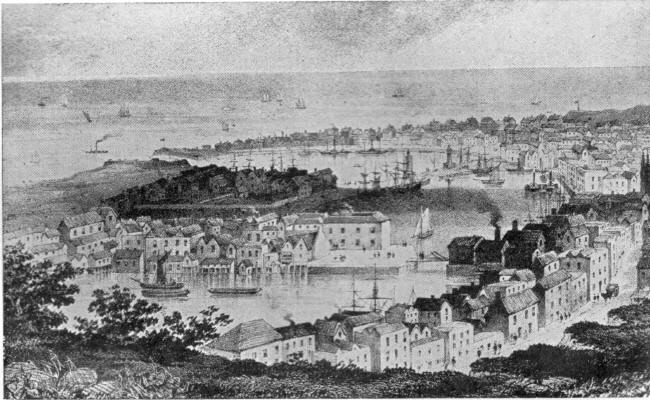| Index |
The Pier District |
 The
Pier District is the area around the Western Docks, once densely populated
with many small streets, lanes and squares. The
Pier District is the area around the Western Docks, once densely populated
with many small streets, lanes and squares.This area, from Snar Gate to Archcliffe Point, was a tidal beach in the 14th century. After Henry VIII built a pier at the western end of the beach to provide some shelter for shipping, the area began to silt up and, over the years, a large amount of land was reclaimed from the sea, so that, by the end of the Tudor period, "The Pier" was a habitable area. The map (left) shows the area in the late 19th century, before the two railway lines were joined and before the shells and bombs of the Second World War took their toll. Amongst the houses there were many hotels, public houses and beer-houses. A description of a "pub crawl" round the district at the turn of the century can be found here. Much of the area survived until the 1960s, when large-scale slum clearance saw the rest of the housing demolished. The closure of the Marine Station and the demise of the Train Ferry Service saw the removal of the railway lines around the Admiralty Pier. The area around Limekiln Street disappeared with the building of the new A2 link to Folkestone. Freight lorry parks and parking for the new Cruise Terminal sounded the final death-knoll for the area. |
|
|
The picture below shows the area as it might have looked in the early 18th
century, looking along Snargate Street towards the Pier (before the
Admiralty Pier was built). At that time, the harbour (now the Tidal
Harbour) was enclosed by the spit of land to the south-west. The
Basin (now the Granville Dock) and The Pent (now the Wellington Dock) were
both tidal, with the River Dour emptying into the Pent.
The Pier District, 1835 |
|
| Only a few buildings survive today. The Lord Warden
Hotel (later Southern House, used by British Rail as offices) can be
clearly seen in the picture below; it is still in use as office
accommodation connected with the port. The Cinque Ports Arms in
Clarence Place is also still standing, as is the Golden Arrow on the
corner of Beach Street (closed for several years and previously used as a
cafe since the closure of the public house). The other buildings in
the area are all commercial. The remains of the Harbour Station can be seen in the centre of the picture, now used as a training centre by P&O Ferries. |
|
 |
|
